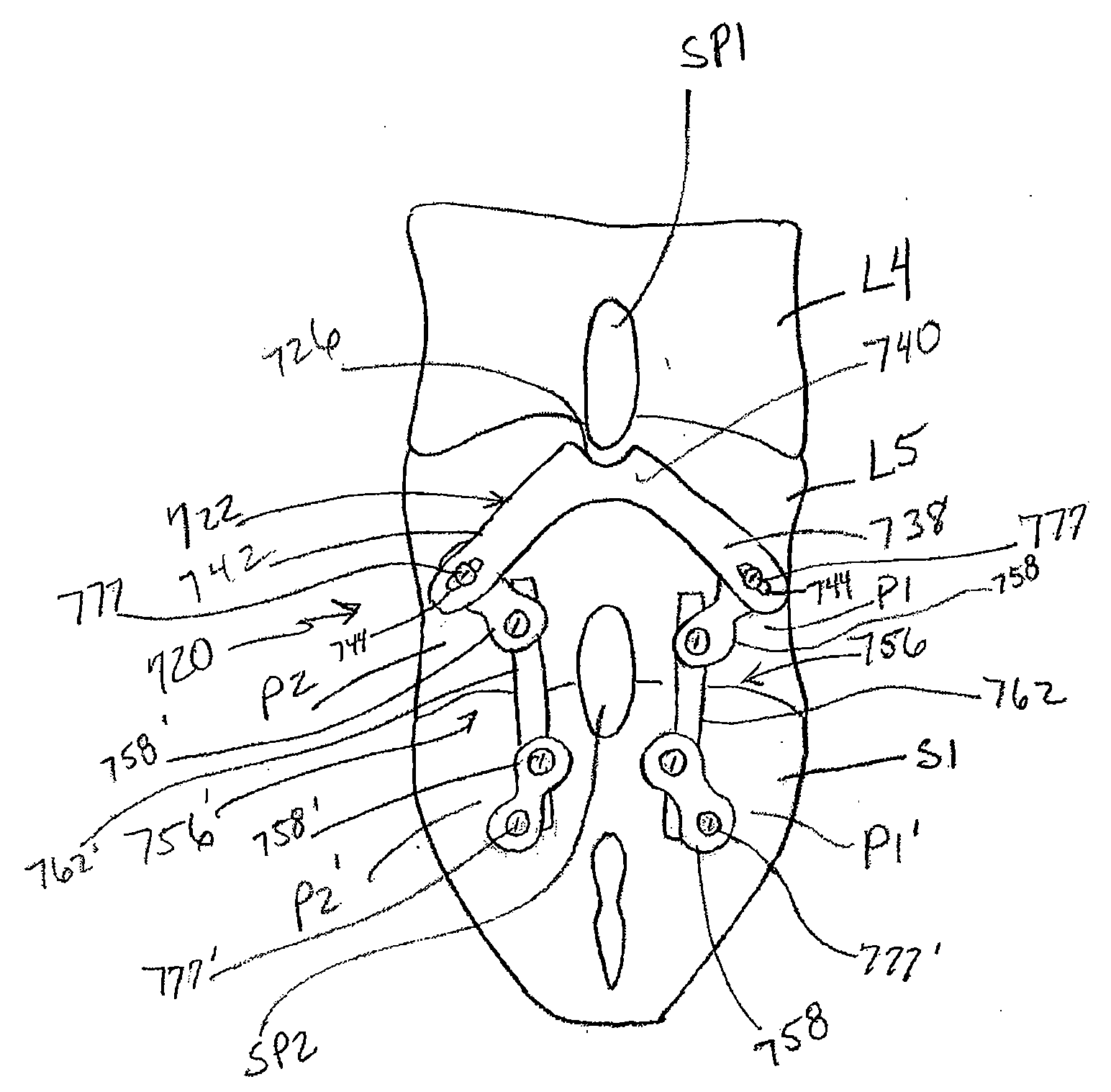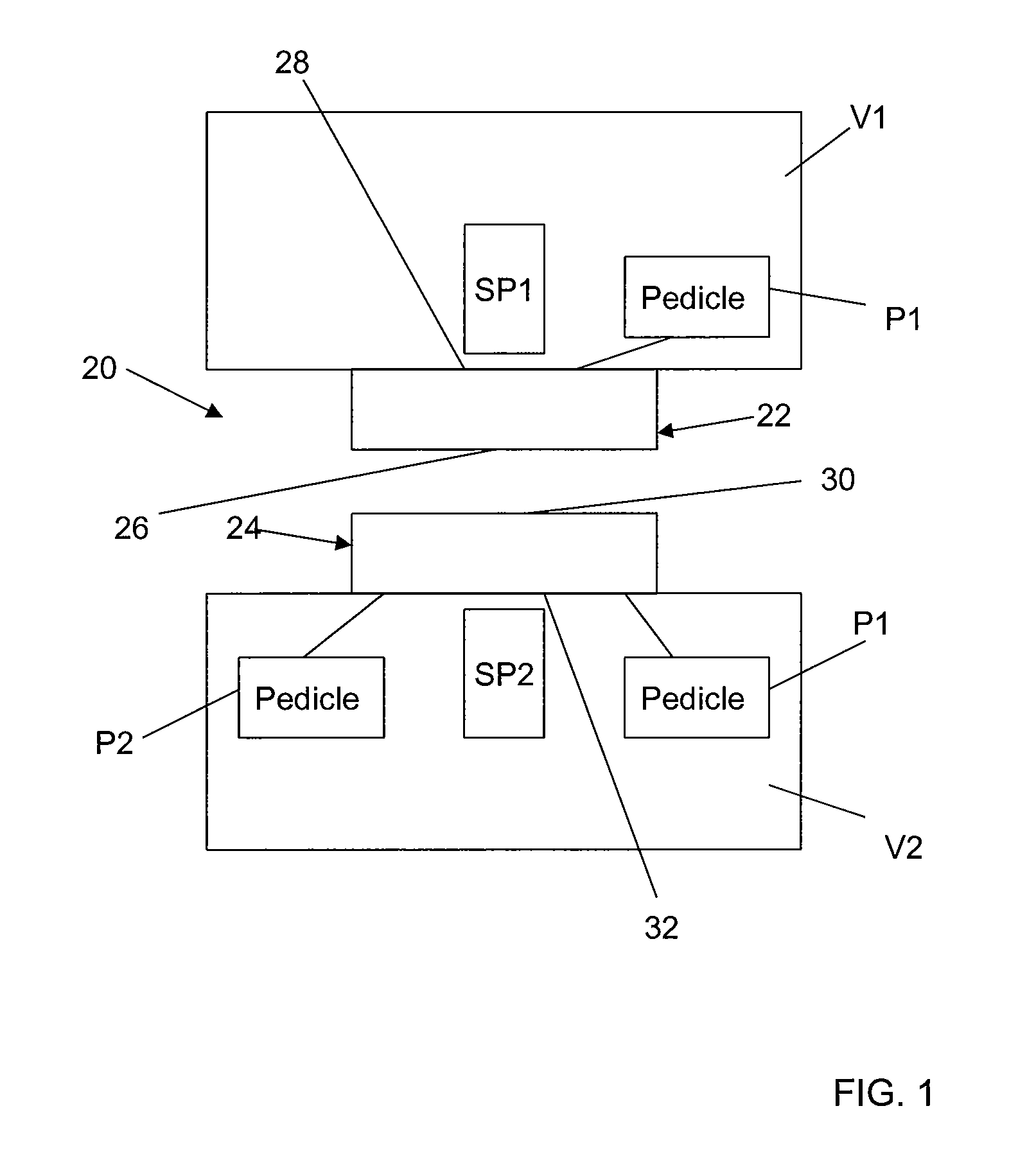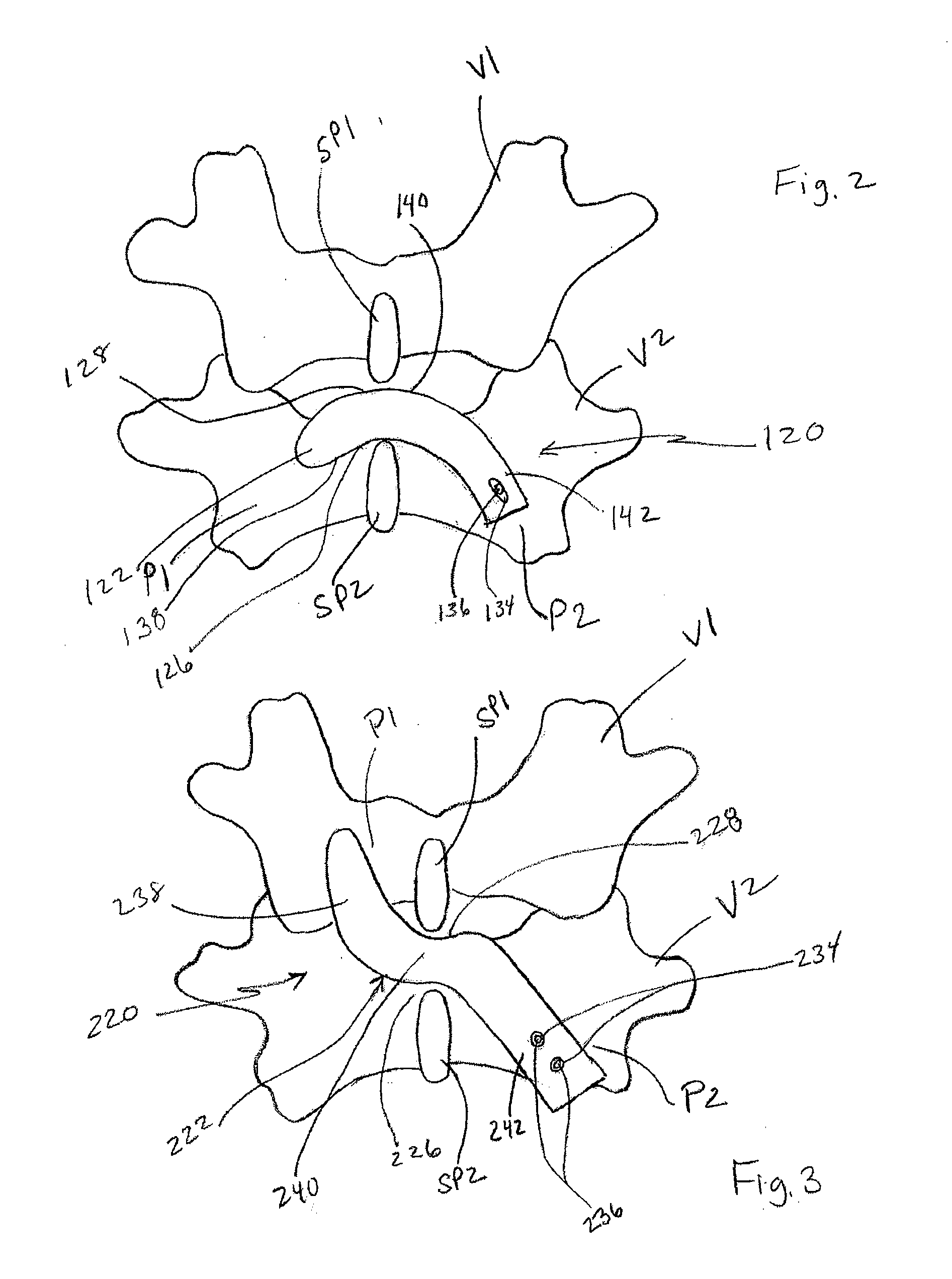Spinous-process implants and methods of using the same
a technology of spinous-process implants and implants, which is applied in the field of medical devices and procedures, can solve the problems of increased chance of significant complications, loss of bladder or bowel function, or paralysis,
- Summary
- Abstract
- Description
- Claims
- Application Information
AI Technical Summary
Problems solved by technology
Method used
Image
Examples
Embodiment Construction
[0022]Devices and methods for performing medical procedures within a spine are disclosed herein. In one embodiment, an apparatus includes an interspinous-process implant (also referred to herein as “implant”) that can be placed between adjacent spinous processes and coupled to a pedicle. In another embodiment, two implants are inserted between adjacent spinous processes, with each being coupled to a pedicle of a vertebra. Such implants can be coupled to a single pedicle of the vertebra, or to a first pedicle of the vertebra on one side of a spinous process and to a second pedicle of the vertebra on an opposite side of the spinous process. In some embodiments, the implant is coupled to a sacral vertebra and can include a surface configured to contact a spinous process of a lumbar vertebra. For example, an implant can be positioned at least partially beneath a spinous process of the L5 lumbar vertebra and be coupled to the S1 sacral vertebra.
[0023]The implants described herein can inc...
PUM
 Login to View More
Login to View More Abstract
Description
Claims
Application Information
 Login to View More
Login to View More - R&D
- Intellectual Property
- Life Sciences
- Materials
- Tech Scout
- Unparalleled Data Quality
- Higher Quality Content
- 60% Fewer Hallucinations
Browse by: Latest US Patents, China's latest patents, Technical Efficacy Thesaurus, Application Domain, Technology Topic, Popular Technical Reports.
© 2025 PatSnap. All rights reserved.Legal|Privacy policy|Modern Slavery Act Transparency Statement|Sitemap|About US| Contact US: help@patsnap.com



